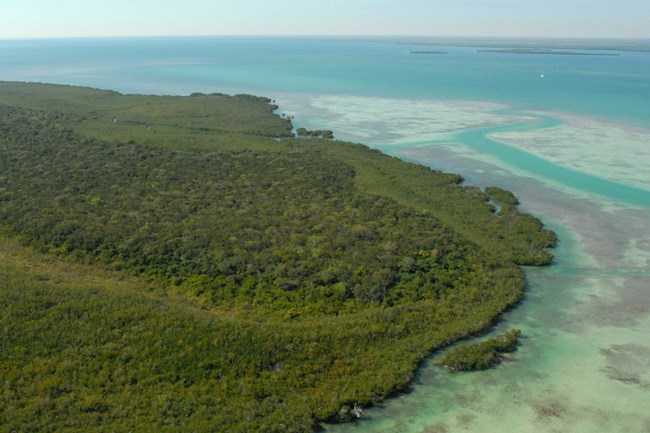
NPS Photo
Overview
Biscayne National Park is one of the largest marine parks in the National Park System of which 95% is under water. The remaining 5% consists of a network of freshwater and brackish wetlands along the western shore of Biscayne Bay, mangrove islands in the bay, and islands that parallel the mainland and which define the eastern edge of Biscayne Bay. While these terrestrial communities are limited in area they account for many miles of shoreline, and include a significant portion of the park’s biodiversity.The Biscayne National Park vegetation mapping project delivers many geospatial and vegetation data products, including an in-depth project report discussing methods and results, which include descriptions to vegetation associations, field keys to vegetation associations, map classification, and map-class descriptions. The suite of products also includes a database of vegetation plots, verification sites, validation sites, and accuracy assessment (AA) sites; digital images of field sites; field data sheets; digital aerial imagery; hardcopy and digital maps; a contingency table listing AA results; and a geodatabase of vegetation and land cover (map layer), field sites (vegetation plots, verification sites, validation sites, and AA sites), aerial imagery index, project boundary, and metadata.
Products
The products of vegetation mapping projects are stored and managed in the National Park Service's Data Store, a repository for documents and publications relating to park resources. From the highlighted items below, click on the type of information you are looking for.
Last updated: October 16, 2018
